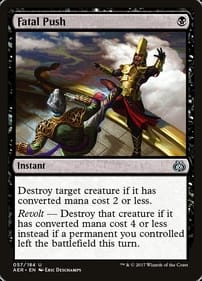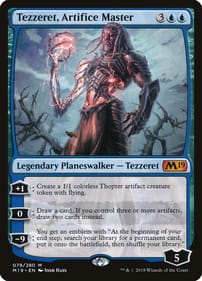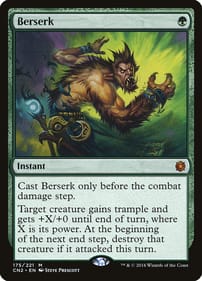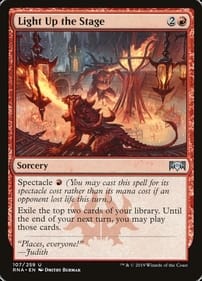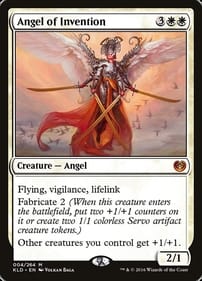So…you wanna catch ‘em all?
Okay, maybe you don’t want to collect the thousands of Pokémon out there, but if you want to start playing this super popular game, you have to start somewhere!
Because there are so many different types of Pokémon, cards, and packs out there, getting started can certainly seem daunting.
That’s why Swirl is here to help! Our guide will walk you through everything you need to know about starting a Pokémon card collection.
From how to build and organize your collection to what kind of cards you should keep an eye out for, we’re here to help you discover this amazing gaming experience!
The Different Types of Pokémon Cards
Telling you that Pokémon cards feature different Pokémon would be stating the obvious - but did you know there are a variety of different cards available?
Playing Pokémon requires more than simply pitting different Pokémon against each other!
In order to build your card collection, you’re going to need Energy cards, Trainer cards, and more.
Here are the different types of Pokémon cards you should know about when starting your collection:
Character Pokémon Cards
In 2021, character Pokémon cards were reintroduced into the high-class VMAX Climax holographic set!
This new type of rarity card was originally introduced in the Dream League set (Sun & Moon - Cosmic Eclipse) in order to illustrate the bond between a trainer and their Pokémon.
The new cards introduced in 2021 includes Character Super Rares that depict a trainer with their Pokémon (such as Red and his Pickachu).
These cards combine elements of standard Pokémon cards with an alternate art style, including the standard yellow border with a full image and no border around the text.
Between the two sets (Sun & Moon - Cosmic Eclipse and the VMAX Climax set), you can find characters such as Torkoal, Weavile, Pikachu, Koffing, Eevee, Dusknoir, and Flaaffy.
Energy Pokémon Cards
In the Pokémon Trading Card Game, energy cards power Pokémon attacks and must be attached to a Pokémon card to perform an attack.
Energy cards come in different classes: Basic and Special.
There are nine basic Energy cards; you can have more than four original copies in your deck. The energy types include:
- Grass Energy
- Fire Energy
- Water Energy
- Lightning Energy
- Psychic Energy
- Fighting Energy
- Darkness Energy
- Metal Energy
- Fairy Energy
Special energy cards provide more than one energy of a specific type and/or have additional effects. Some can heal your Pokémon, while others can add energy to your attack.
There are multiple types of Special Energy cards, including:
- Double Colorless Energy
- Rainbow Energy
- Healing Energy
- Recycle Energy
- Boost Energy
- Bounce Energy
- Retro Energy
- Magma Energy
- Rapid Strike Energy
- Lucky Energy
- Treasure Energy
Trainer Pokémon Cards
Trainer Pokémon cards provide a supportive role and allow you to search through your deck, draw cards, and other special effects.
You can play a Trainer card during your turn and follow its instructions.
The types of Trainer cards include:
- Item Card
- Stadium Card
- Pokémon Tool Card
- Supporter Card
- Technical Machine Card
- Ace Spec Card
- Rocket’s Secret Machine Card
- Goldenrod Game Corner Card
These cards allow you to do things like change the field of play, use more than one effect and provide special attacks.
Rarity
The rarity of Pokémon cards, also known as their “pull ratio”, describes how difficult it is to obtain that card in Pokémon card packs.
There are three types of rarities, and each is represented by a special symbol at the bottom of each card:
- Common (circle; unevolved Pokémon)
- Uncommon (diamond; both unevolved and evolved Pokémon)
- Rare (star; evolved and Legendary Pokémon)
- Ultra-Rare (outlined star; associated with a unique mechanic)
Every Pokémon booster pack is guaranteed to include at least one rarity card.
The rarest Pokémon card is the Illustrator CoroCoro Comics Promo Pickachu card, which was released in 1998 and valued at $6,000,000 - making it the most expensive Pokémon card as well!
But this doesn’t mean you won’t find rare or ultra-rare cards in Pokémon card packs.
Vintage Pokémon Cards
From 1998 to 2003, Wizards of the Coast was responsible for producing, translating, and distributing Pokémon trading cards before this was taken over by The Pokémon Company International, owned by Nintendo.
Because of the limited print run by Wizards of the Coast, these cards are often sought out by vintage Pokémon card collectors.
The sets produced by Wizards of the Coast include:
- 1999 Pokémon Base Set
- 1999 Jungle Set
- 1999 Fossil Set
- 2000 Pokémon Base Set 2
- 2000 Team Rocket
- 2002 Neo Destiny
- 2003 Skyridge
These vintage Pokémon cards cost a bit more than regular cards but are not at all expensive.
Some of the Wizards of the Coast Pokémon cards we offer at Swirl include:
1st Edition Cards
During the first edition run of Pokémon, cards in the Base Set were marked by Wizards of the Coast with an “Edition 1” symbol on the card.
As far as 1st Edition Pokémon card value goes, they are worth more than Unlimited cards and are hard to come by.
Included in the base set were Shadowless Pokémon cards, which had a different layout.
If you look at a Shadowless Pokémon card, you’ll notice that there is no drop shadow under the character illustration window - this was added later to give the aesthetic more depth.
These cards are not marked with an “Edition 1” symbol and were only produced as a small print run.
The Different Pokémon Card Sets
When looking at Pokémon card prices, starting your Pokémon card collection with a set is often advantageous.
There are eight generations of sets altogether, adding up to 9,110 cards!
So how do you choose a Pokémon card set?
You can always start with the original 1999 Wizards of the West Coast Base Set that consists of 102 cards, or look for a recently released theme deck.
When you’re new to playing Pokémon, you can opt for recent releases and then build your deck by purchasing booster boxes and booster packs.
Booster packs contain 10 random cards, each with a rarity, and are released in sets around four times per year.
A booster box comes with 36 booster packs, which gives you a better distribution of cards when it comes to rarity.
Overall, buying a booster box gives you the best deal!
Starting Your Pokémon Card Collection
Now that you know all about the different Pokémon card types and sets, let’s look at how you can really get started!
First, you should decide what kind of cards you want to collect and why. Do you want to collect and display them? Do you want to play the Pokémon Trading Card Game?
You can also start your collection based on Pokémon types, card values, sets, and more!
Next, look at which cards are currently in print. Unless you are looking to build a collector’s set of valuable and vintage cards, you’ll want to start with the cards that are readily available.
If you are looking for a cost-effective way to start your card collection, consider buying your Pokémon cards in bulk.
At Swirl, you can check out our value packs or build a custom pack!
Expanding Your Pokémon Card Collection
As you get into the game, you’re going to want to strategically build your collection to create a stronger team to challenge other players.
This is when you will want to consider grabbing some booster boxes or booster packs.
You can also start trading cards with other players (which is why keeping duplicates is a good idea!).
Just be sure that you are getting a fair deal and try to keep a 1:1 ratio when trading cards (don’t trade multiple cards for one card).
When you do trade your Pokémon cards, start with baby steps. Trade up gradually from low-value to high-value cards.
Organizing Your Collection
Once you start to build up your collection, you’re going to need a way to store and organize them!
Many players use binders and card sleeves to keep track of their Pokémon cards. You can organize your collection by type, set, evolution, rarity, or Pokedex number.
For example, you can organize your Pokémon cards by water type - but you can then further organize them by arranging them according to rarity, evolution, etc.
And keeping your cards in a binder is a great way to protect them from damage!
How to Tell if a Pokémon Card is Fake
When you’re investing time, money, and energy into building a Pokémon card collection, the last thing you want is to find out that any of your cards are fake!
Fortunately, there are some ways that you can immediately spot a fake Pokémon card:
- Check to see if the Pokémon actually exists.
- Does the é have an accent?
- Look for spelling errors and obvious grammar mistakes.
- Does is have the year it was printed on the card?
- Are the elemental symbols all in the right place?
- Look at the Pokémon’s HP. Fake cards will give characters unreasonable HP (such as an Eevee with 1000 HP).
If it’s not obvious that your card is a fake, you can do a quick search through the official Pokémon Trading Card Game database to ensure that the card was actually in print at some point.
Even if your card has passed these checks, you’re not out of the woods yet! Try comparing the card to a real Pokémon card to spot any differences such as text size and the card size.
Pay attention to the card stock as well. It’s hard for counterfeiters to recreate the cardstock used for Pokémon cards, so they may bend in a different way or allow light to pass through the material.
Overall, if you think you’ve scored a high-value Pokémon card for a good deal, double-check to make sure it’s not fake!
Knowing the Value of Your Card
If you’re interested in knowing your Pokémon card value so you can sell them down the road, here is what you should look for:
- Check the card rarity. Rare and ultra-rare cards are obviously worth more!
- Look for the print date. Cards printed close to the game’s release (Wizards of the Coast) are worth more than recently printed cards.
- Look for Shadowless Pokémon cards and the “Edition 1” stamp.
- Check the collector number at the bottom right corner. Rarer cards have a collector number higher than the total number of cards (i.e. 65/64). Collector numbers that start with SH is a “Shining Pokémon” and rarer than its non-shiny counterpart.
- Holographic cards have a shiny foil layer over the artwork, and reverse-holo cards are holographic everywhere else. These aren’t always valuable, but it does increase the value of rare cards.
- Look for extra symbols and words after the Pokémon’s name. Most display the Pokémon level after the name in the top right, whereas rarer cards have a special symbol instead.
There are other signs you can look out for when it comes to your Pokémon card value, such as full art cards and World Championship cards that have a different back than regular cards.
If you’re interested in selling or trading your Pokémon cards, check out our Sell/Trade list!
Gotta Catch ‘Em All!
Well, you really don’t have to in order to enjoy this amazing game - but you have to start somewhere.
Swirl Cafe and Games is dedicated to all things Pokémon. We want to help you build your collection, learn the game, and have fun with your friends!
Our Edmonton cafe welcomes Pokémon enthusiasts from all walks of life and all levels of experience.
We live and breathe Pokémon, so don’t hesitate to visit us or get in touch if you have any questions about starting your Pokémon card collection.
We look forward to seeing you!


![Night Stretcher [SFA - 061/064]](http://swirlyeg.com/cdn/shop/files/560372_300x.jpg?v=1752621536)

![Budew [PRE - 004/131]](http://swirlyeg.com/cdn/shop/files/610359_af7e12e9-de0d-4bfd-8709-f0cd42c64345_300x.jpg?v=1757713813)
![Arven - 166/198 [SVI - 166/198]](http://swirlyeg.com/cdn/shop/files/488071_300x.jpg?v=1757531234)
![Iono - 080/091 [PAF - 080/091]](http://swirlyeg.com/cdn/shop/files/534442_1b6e488c-8a04-48d1-9661-4297eef1769c_300x.jpg?v=1752863702)

![Buddy-Buddy Poffin [PRE - 101/131]](http://swirlyeg.com/cdn/shop/files/610456_7c8fefff-c4b7-4f88-b9ee-fafcbf5de639_300x.jpg?v=1757531061)
![Technical Machine: Evolution [PAR - 178/182]](http://swirlyeg.com/cdn/shop/files/523859_e6d91097-0ba3-44c1-801b-5c1da5175110_300x.jpg?v=1752527098)
